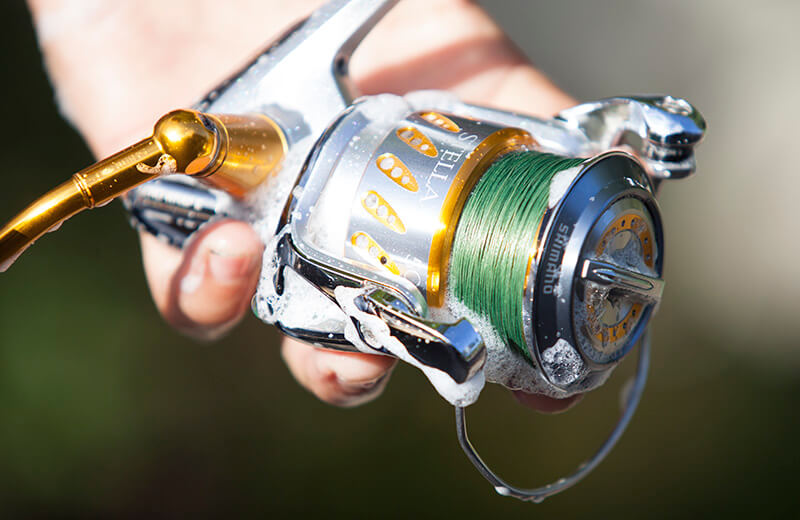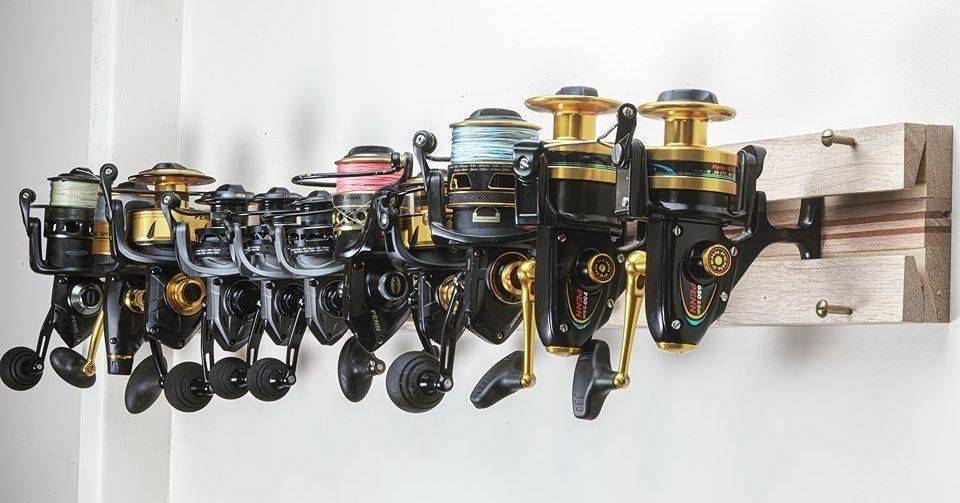Fishing reels are the workhorses of your angling arsenal. They play a critical role in casting your line, retrieving your catch, and battling trophy fish. Just like any high-performance machine, proper maintenance is essential to ensure your reels function smoothly, last for years, and deliver optimal performance on every cast. This comprehensive guide dives deep into the world of fishing reel maintenance, providing detailed instructions and valuable tips specifically tailored for anglers in the US.
The Importance of Reel Maintenance
Imagine setting the hook on a monster fish, only to have your reel seize up or malfunction. Proper maintenance helps prevent these frustrating situations by:
- Preventing Corrosion: Saltwater and even freshwater can cause significant corrosion on your reel’s metal components. Regular cleaning and lubrication create a protective barrier against rust, extending the lifespan of your reel.
- Minimizing Wear and Tear: Moving parts within the reel are susceptible to wear and tear over time. Regular cleaning and lubrication reduce friction, minimizing wear and maintaining smooth operation.
- Optimizing Performance: A well-maintained reel performs flawlessly. It retrieves line smoothly, delivers consistent drag pressure, and allows for effortless casting. By keeping your reel in top shape, you maximize your fishing efficiency and enjoyment.
- Saving Money: Regular maintenance is far more cost-effective than replacing a damaged or worn-out reel. Investing time and effort into upkeep saves you money in the long run.

Cleaning Your Reel Regularly: The Foundation of Maintenance
Developing a regular cleaning routine is the cornerstone of proper reel maintenance. Here’s a breakdown of the cleaning process, categorized by frequency:
After Each Fishing Trip
- Remove Debris: Use a soft, damp microfiber cloth to remove dirt, sand, and any visible debris from the reel’s exterior. Pay particular attention to areas around the spool, line roller, and bail arm.
- Freshwater Rinse: For saltwater fishing, or if your reel came into contact with excessive dirt or grime, a gentle rinse with freshwater is crucial. Hold the reel under a running faucet with low pressure to remove any lingering salt or debris. Never use a high-pressure hose, as it can force contaminants into the reel’s internal mechanisms.
Periodic Deep Cleaning (Monthly or as Needed)
- Consult the Manual: Before disassembling your reel, refer to the manufacturer’s instructions for specific disassembly procedures. Each reel model may have slight variations. Disassembling without proper guidance can lead to frustration and potentially damage your equipment.
- Disassemble the Reel: Carefully disassemble the reel following the manufacturer’s instructions. Pay close attention to the order of parts and their orientation for a smooth reassembly process.
- Clean Each Part: Use a soft brush, mild dish soap, and lukewarm water to clean each individual component. Pay particular attention to the gears, bearings, and other moving parts. Avoid using harsh chemicals or solvents, as they can damage the reel’s materials.
- Dry Thoroughly: After cleaning, thoroughly dry all parts with a clean, lint-free cloth. Leaving any moisture behind can lead to rust and corrosion. Allow everything to air dry completely before reassembly.
Lubrication: Keeping Your Reel Running Smooth
Proper lubrication is essential for smooth operation and minimizing wear and tear on your reel’s internal components. Here’s what you need to know:
- The Right Lube: Use only lubricants specifically designed for fishing reels. These lubricants are formulated to withstand the harsh environment fishing reels encounter, including exposure to saltwater and extreme temperatures. Avoid using general-purpose lubricants or WD-40, as they can attract dirt and grime, ultimately causing more harm than good.

- Less is More: A little lubrication goes a long way. Apply a small drop of oil or a dab of grease to specific points on the gears, bearings, and other designated friction points as outlined in your reel’s manual. Over-lubrication can attract dirt and debris, leading to increased wear.
Inspecting for Wear and Tear: Catching Problems Early
Regular inspection is a proactive approach to maintaining your reels and preventing major breakdowns. Here’s what to look for:
- Visual Inspection: Regularly examine your reel for any visible signs of damage, such as cracks, chips, or bent components. Pay close attention to the spool, bail arm, handle, and line roller.
- Feel for Smoothness: Rotate the reel handle and feel for any grinding, seizing, or unusual resistance. A smooth, effortless rotation indicates proper operation.
- Drag System Check: Test the drag system by setting the drag to different pressures and pulling on the line. The drag should engage smoothly and release evenly.
Addressing Issues: If you discover any problems during inspection, don’t ignore them. Here’s how to handle common issues:
- Minor Wear and Tear: For minor issues like loose screws or a slightly bent bail arm, you may be able to fix them yourself with the right tools and replacement parts (refer to manufacturer’s guides).
- Major Damage: For more serious problems like cracked components, worn-out gears, or a malfunctioning drag system, consider seeking professional servicing from a qualified tackle shop or reel repair specialist.
Replacing Worn Parts:
Over time, even with proper maintenance, certain parts will wear out. Here’s how to handle worn parts:
- Identify Worn Parts: Regular inspection helps identify parts that need replacing. Common wear items include bearings, gears, and drag washers.
- Invest in Spares: Consider keeping a spare parts kit for your specific reel model readily available. This allows for quick repairs and gets you back on the water faster.
- Seek Professional Help: For complex replacements or if you’re unsure about the repair process, consult a professional for proper installation and adjustment.
Storing Reels Properly: Ensuring Long-Term Health
Proper storage protects your reels from environmental damage and keeps them in top condition between fishing trips. Here are key storage practices:
- Dry and Cool Environment: Store your reels in a cool, dry place away from direct sunlight and moisture. Garages, basements, or dedicated fishing gear storage rooms are ideal locations. Avoid damp areas like attics or sheds, where moisture buildup can lead to corrosion.
- Loosen the Drag: Before storing your reels for an extended period, loosen the drag completely. This relieves pressure on the internal components and prevents them from warping or sticking over time.
- Covering Up: Consider using a soft cloth cover to protect your reel from dust and scratches.

Seasonal Maintenance: A Deep Dive for Optimal Performance
While regular cleaning and lubrication are crucial, taking the time for seasonal maintenance ensures your reels are in peak condition for the upcoming fishing season. Here’s a breakdown of seasonal maintenance:
- Pre-Season Check (Spring): Before the first fishing trip of the year, perform a thorough cleaning and lubrication of your reels. This includes disassembling (refer to the manual), cleaning all parts, applying fresh lubricant, and reassembling. Inspect for any wear and tear that may have occurred during storage.
- Post-Season Check (Fall): After the last fishing trip of the season, repeat the pre-season cleaning and lubrication process. Additionally, consider taking your reels to a professional for a more comprehensive service. Professionals can identify and address any potential issues that you may have missed, ensuring your reels are in top shape for the following season.
Additional Tips for Reel Maintenance Savvy
Here are some bonus tips to elevate your reel maintenance game:
- Invest in Quality Gear: High-quality reels from reputable brands are generally built with more durable materials and tighter tolerances. This translates to better performance, easier maintenance, and a longer lifespan for your investment.
- Follow Manufacturer’s Guidelines: Each reel model may have specific maintenance requirements. Always refer to the manufacturer’s instructions for your specific reel for detailed cleaning, lubrication, and disassembly procedures.
- Be Gentle: Handle your reels with care, both on and off the water. Avoid dropping them or banging them against hard surfaces, as this can damage internal components.
- Maintain Records: Keep a logbook or record of your maintenance activities, including dates of cleaning, lubrication, and parts replacement. This helps you track your maintenance schedule and identify any recurring issues that may require further attention.
Conclusion: Reap the Rewards of Proper Maintenance
By following these comprehensive maintenance practices, you can ensure your fishing reels perform flawlessly for years to come. Remember, a little time and effort invested in maintaining your reels translates to:
- Smooth Operation: Enjoy effortless casting, retrieving, and fighting fish with a well-maintained reel.
- Enhanced Performance: A properly lubricated and serviced reel delivers optimal drag control and line management.
- Extended Lifespan: Regular maintenance prevents premature wear and tear, extending the life of your valuable fishing equipment.
- Reduced Costs: By proactively addressing minor issues, you can avoid costly repairs or replacements down the road.
- Increased Fishing Enjoyment: Spend less time worrying about equipment and more time focusing on catching fish and enjoying the outdoors.
So, the next time you head out for a fishing trip, take pride in knowing your reels are meticulously maintained and ready to perform at their peak. Tight lines!

Robert Smith is the proud owner of Bait Barrels and Bows, a premier fishing sports store established in 1989. With over three decades of experience in the industry, Robert has honed his skills to become an expert angler, sharing his vast knowledge and passion for fishing with enthusiasts around the world. Through his store and writings, Robert provides invaluable tips and guidance, helping both novice and seasoned anglers improve their techniques and enjoy the sport to its fullest. His commitment to the fishing community is evident in his dedication to quality products and excellent customer service.

